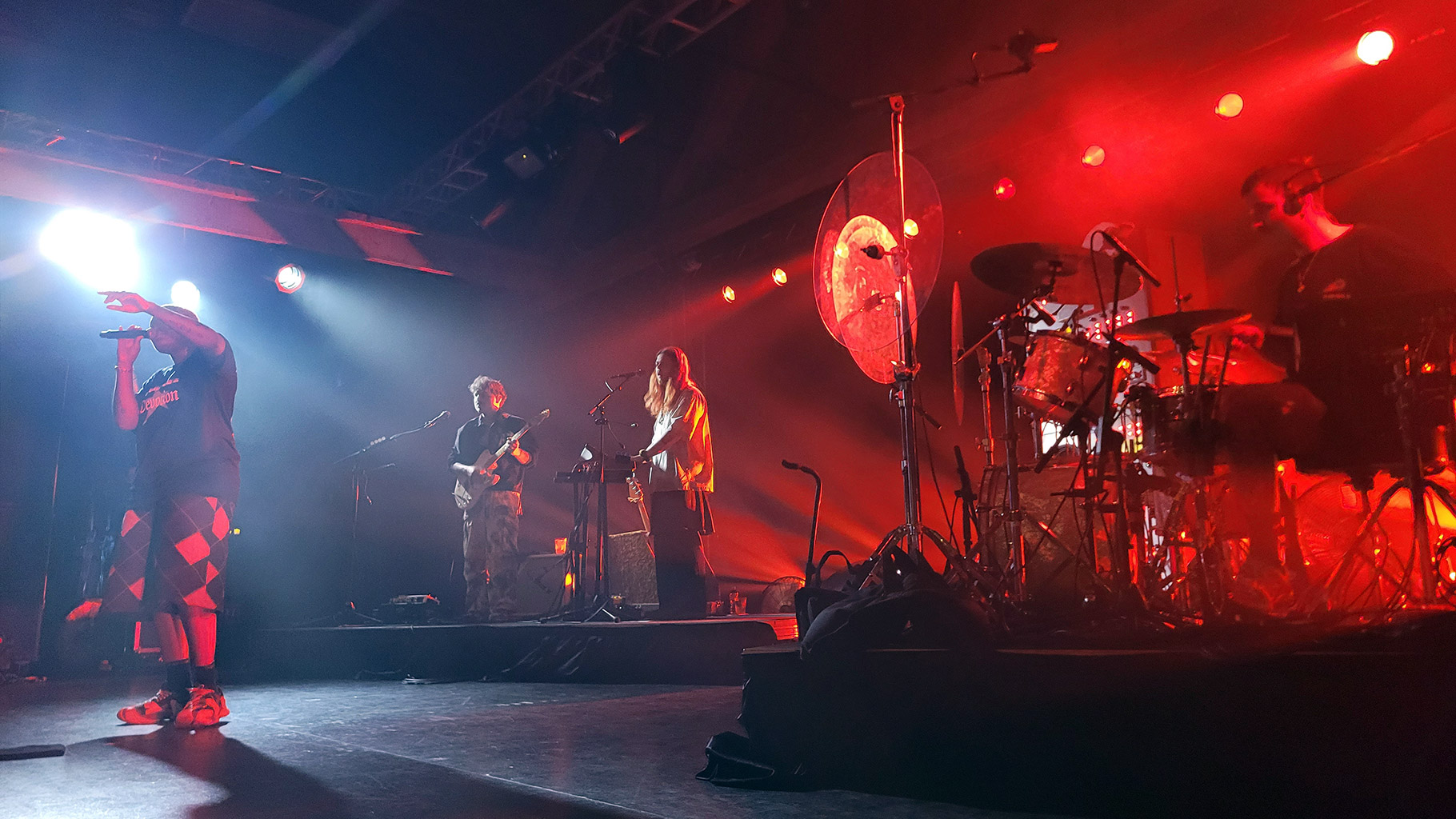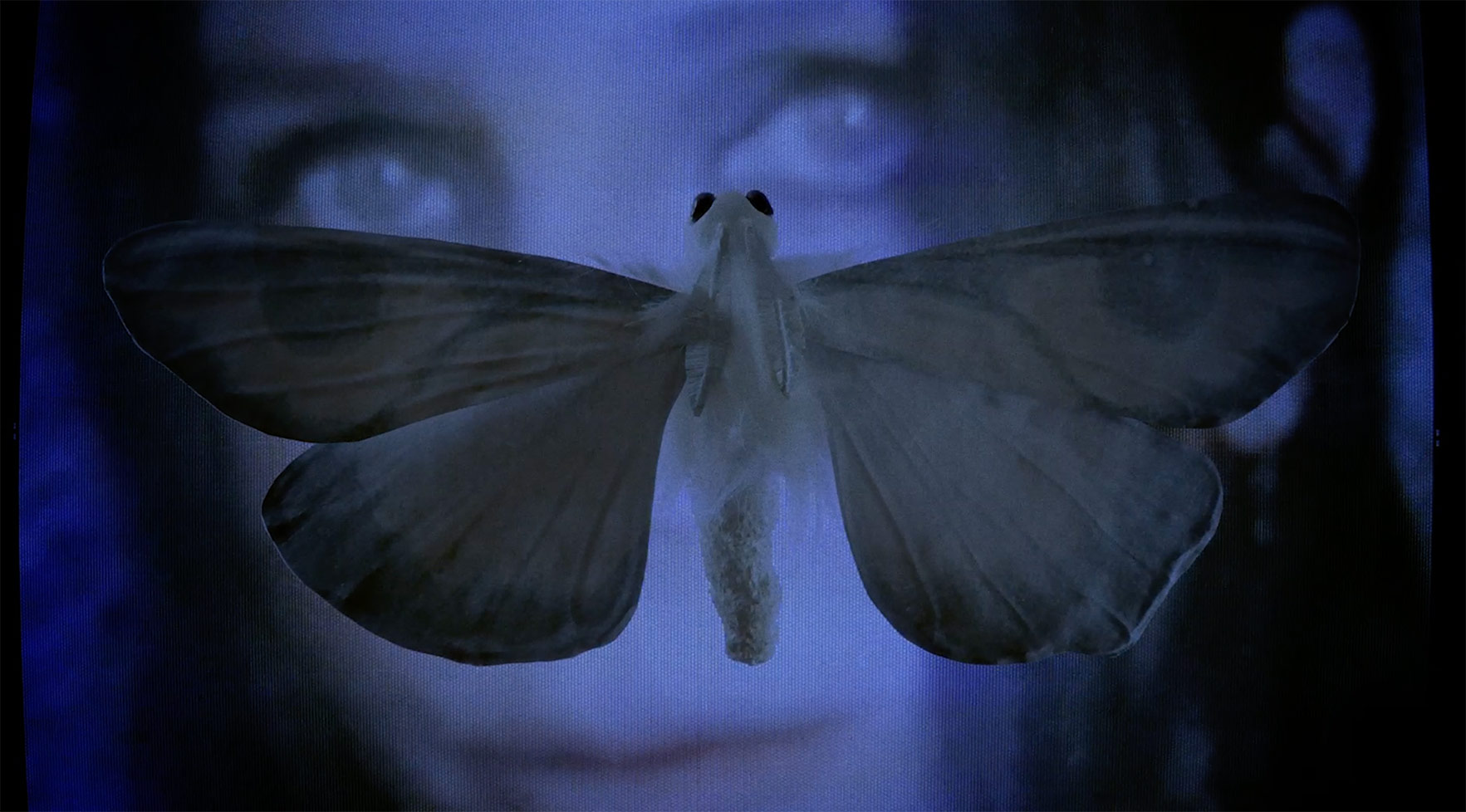 an·he·do·ni·a
an·he·do·ni·a
/ˌanhēˈdōnēə/
noun: anhedonia
inability to feel pleasure.
Chelsea Wolfe & Emma Ruth Rundle – “Anhedonia” Music Video
Can you speak a bit to the “grief moth” concept which inspired this piece, and why it resonated so deeply with you?
Moths make appearances in my life a lot, and I try to pay attention when they do, because they’re usually trying to tell me something. They sort of have a mixed symbolism; moths are associated with darkness but spend their life seeking light. They can represent the soul of a departed one. And because of their relationship with the moon, to me they hold a deep feminine energy. Around the time I discovered [Blood Milk Jewels] and the grief moth idea, I had just lost my family in different ways. I was wrestling with my own grief and learning to have a relationship with it, and I fell wholly in love with the concept of a little moth trying to help carry your sadness with you. It was healing in a small way. I am always trying to translate my more antagonistic emotions into imagery in order to help purge them, and so I thought about how to visualize the transformativity of a moth’s life cycle if it were literally born from grief, and how, through that cycle, sorrow is transmuted into hope.
Chelsea Wolfe has said, “I had worries about releasing the song, not wanting to romanticize the condition of anhedonia (the inability to feel pleasure), but I also understood that it could possibly be cathartic for others who are struggling, as it was for me, to sing and dance my way out of a depression.” How does this statement strike you in relationship to your experience creating this piece of work, or what you have heard from others who have seen it?
All of us turn to art of some kind in order to feel like we’re not alone. Chelsea’s music has always been cathartic, and I think that’s what makes her such a special artist. When I first listened to “Anhedonia,” I cried; it was the exact thing I needed at that point in time. It’s sad, but there’s so much comfort in the end. When the song was released, you can see how people responded to it; how much this all resonated. It’s very healing to have a piece of art take you down to the dark places you are familiar with while still gently holding you up; it’s that very human hope of “Oh, I’m actually not alone,” which is strength-giving. I’m grateful to have been trusted with this song.
I’ve been confronting a long-buried trauma, and during quarantine, that confrontation intensified. I think one of the worst parts of it is how apocalyptically alone I can feel with it, how completely disconnected I can feel from anyone else and how powerless I am to even bridge that, so making this video felt like an opportunity to reach out to others that would be like a two-way catharsis; for those who understood in their own ways, and in that understanding, I would end up feeling less alone. So the visuals all ended up being expressions of my own experiences with sadness and loneliness, with things like disassociation and PTSD. I’m very thankful to have had responses from friends and strangers saying that they felt touched by it.
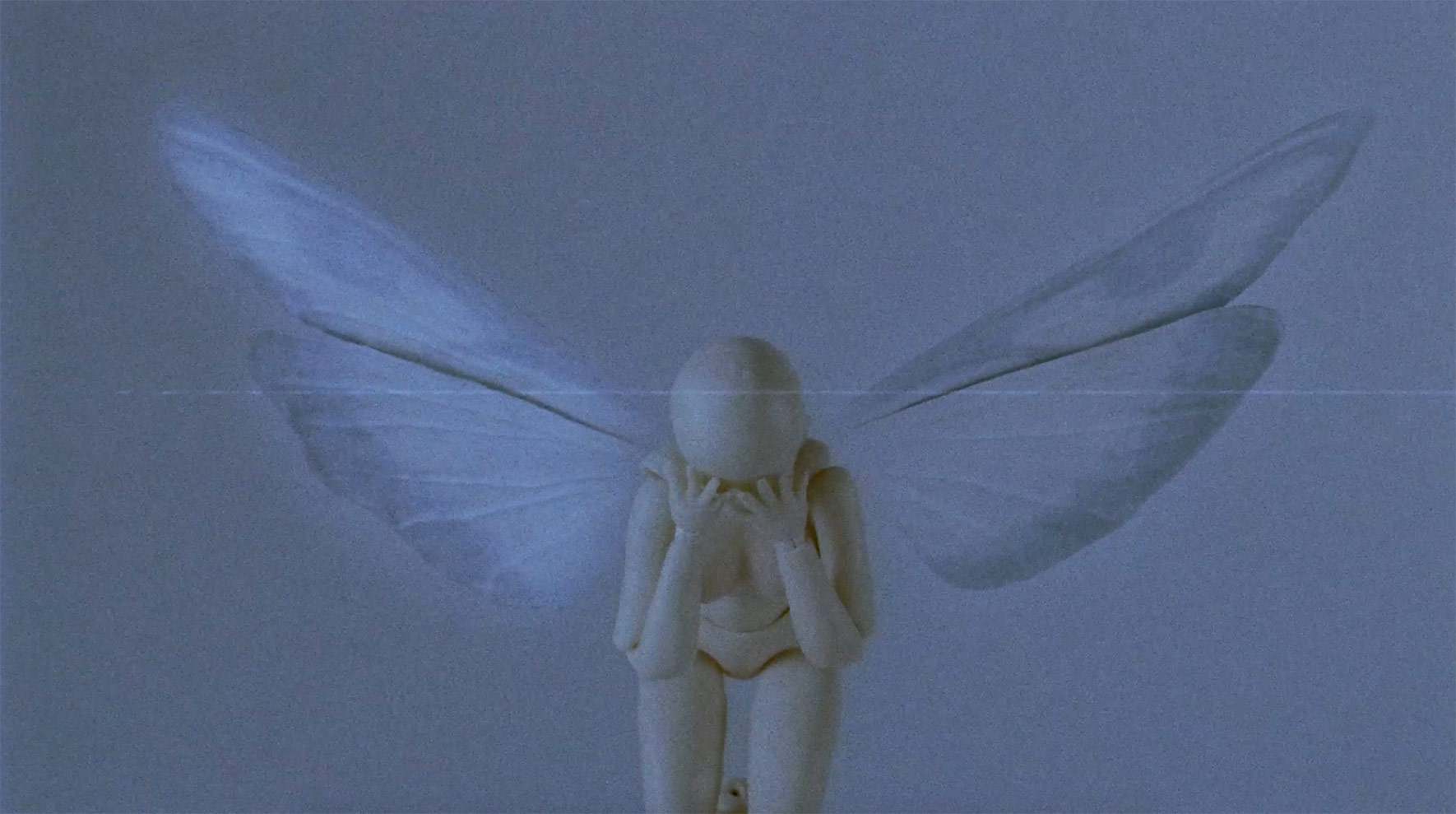

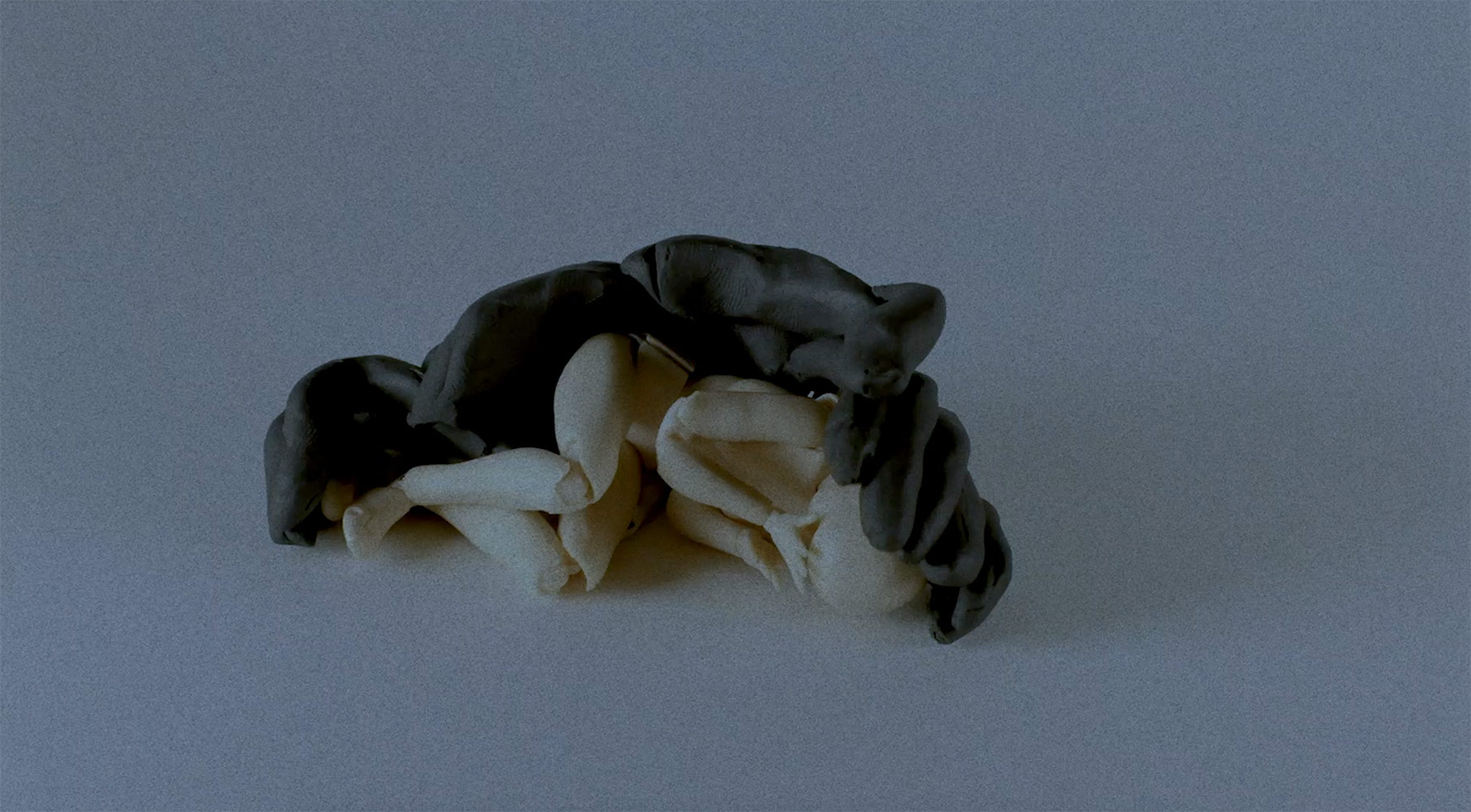
The scene where the soft black clay swallows up the wooden figure is absolutely striking. Can you speak a bit to the process of creating this visual, both conceptually and logistically? How did the idea come to you?
Thank you! I’d been learning about just how much trauma can completely reshape your world – rewire you mentally and alter you physically – and that was a motif that paralleled with the moth’s life cycle. For this specific image, I wanted to visually articulate how I feel during a PTSD episode: hollowed out and swallowed up. Like a blank mannequin being engulfed in her darkness.
Can you speak to the process of working with the screens and stop-motion? What were some challenges or benefits to working with these two different artistic styles within the same music video and sometimes even the same frames?
I love mixing live-action with stop-motion, but it is a NIGHTMARE to pull off. Stop-motion can be time-consuming and tedious… but when you bring a live-action recording that has to be timed out the same as what you’re animating, it can get really easily jumbled. A lot of the shots of the TV with Chelsea and Emma singing, I was able to shoot separately and then combine in post, but the places where they physically overlap (i.e. the end shot), I had to play the performances frame by frame while shooting the moth picture by picture. So so so slow – but so worth it.
The music video ends with a series of help hotline numbers. Why did the team feel this was important to include?
Chelsea was the one who initially brought that up, and I think it was a very compassionate thing to do, because it’s not necessarily an intense video or song, but the topics and overall vibe of the video can be triggering. If we’re taking people through this valley of grief and it ends up striking them at just the wrong time it’s important they be reminded of the help that’s immediately available to them.
Is there anything else you would like to add about the processes of working together or the music video? Any interesting anecdotes or tidbits?
I would love to highlight Phoebe Jane Hart and Megan Barbour, who are responsible for the moth. Phoebe designed it based on my ambiguous ramblings because she knows me that well, and built some really beautiful moths of differing sizes as well as the chrysalis. And then Megan took it from there and fabricated the final moth that’s in the video. They are both stunningly creative and crafty in ways I wish I was.
As for a fun tidbit: I was visited by some moths during the making of this. Notably, the week I began shooting, my partner and I were sitting in the park when a little beauty flew right into my hand, hung out for a few seconds flitting her wings, and then took off. When things like that happen, I’d like to believe that I was, on some vibrational level, sending out a distress call, so nature responded with her own way of sending comfort.
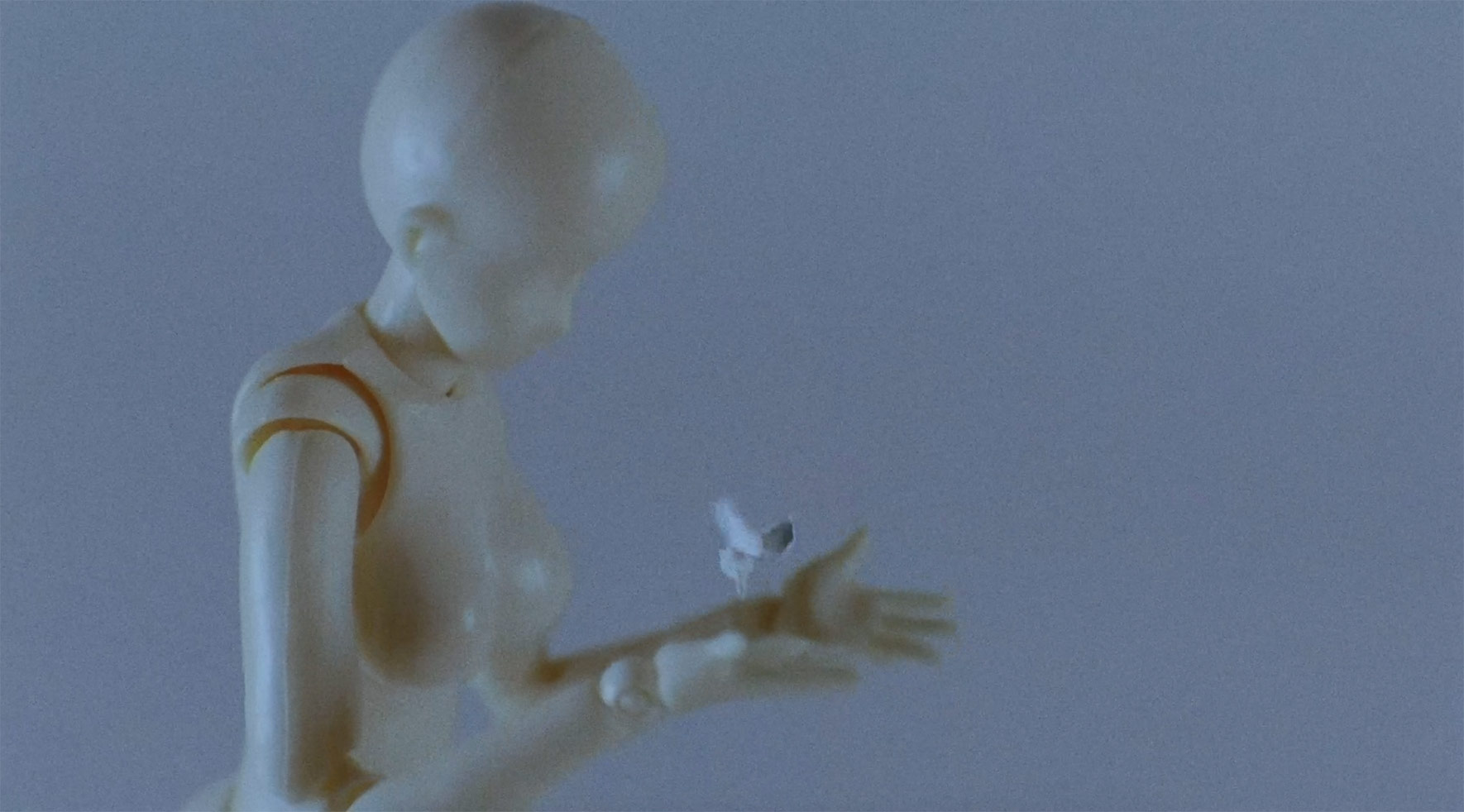


“Anhedonia” was mixed / produced by Ben Chisholm and is available now across all digital retailers via Sargent House. Listen and share below.
FOLLOW THE ARTISTS
CRESSA BEER: instagram + website
CHELSEA WOLFE: instagram + website
EMMA RUTH RUNDLE: instagram + website
Ω




